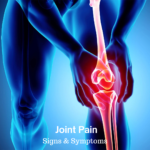Understanding Joint Swelling: Causes, Symptoms, and Treatment
Joint swelling is a common symptom that many individuals experience at some point in their lives. This condition, characterized by an increase in fluid in the tissues surrounding the joints, can be caused by a variety of factors ranging from injury to chronic diseases. Understanding the underlying causes, recognizing the symptoms, and seeking appropriate treatment can help manage this often painful condition.
Causes of Joint Swelling
Joint swelling can be triggered by several different factors. Here are some of the most common causes:
- Injury: Trauma to the joint, such as sprains, strains, or fractures, can cause swelling. The body’s natural response to injury is inflammation, which leads to increased fluid in the joint area.
- Arthritis: There are various types of arthritis, but the most common ones causing joint swelling are osteoarthritis and rheumatoid arthritis.
- Osteoarthritis: This is a degenerative joint disease that results from the wear and tear of cartilage. As the cartilage breaks down, bones may rub against each other, causing pain, swelling, and stiffness.
- Rheumatoid Arthritis: This is an autoimmune disorder where the immune system mistakenly attacks the synovium (the lining of the membranes that surround your joints), leading to inflammation and swelling.
- Infections: Septic arthritis is an infection in the joint that can cause rapid swelling, pain, and redness. It requires immediate medical attention to prevent joint damage.
- Gout: This is a type of arthritis caused by the accumulation of uric acid crystals in the joint, leading to intense pain and swelling, often in the big toe.
- Bursitis: The bursae are small fluid-filled sacs that cushion the bones, tendons, and muscles near the joints. Inflammation of these sacs, known as bursitis, can cause joint swelling.
- Tendonitis: Inflammation of the tendons, the thick cords that attach muscles to bones, can lead to swelling around the joints.
- Other Medical Conditions: Conditions such as lupus, psoriatic arthritis, and Lyme disease can also cause joint swelling as part of their broader symptom profiles.
Symptoms of Joint Swelling
The primary symptom of joint swelling is an increase in the size of the joint due to fluid accumulation. Other associated symptoms may include:
- Pain: The affected joint may be painful, especially when moved.
- Stiffness: Swelling can restrict the range of motion of the joint.
- Redness and Warmth: The skin over the swollen joint may appear red and feel warm to the touch.
- Tenderness: The joint may be sensitive to touch or pressure.
- Decreased Function: The ability to use the joint may be impaired, affecting daily activities.
Diagnosing Joint Swelling
If you experience joint swelling, it is important to consult a healthcare professional to determine the underlying cause. The diagnostic process may include:
- Medical History: The doctor will ask about your symptoms, medical history, and any recent injuries or infections.
- Physical Examination: A thorough examination of the affected joint will be conducted to assess swelling, warmth, redness, and range of motion.
- Imaging Tests: X-rays, MRI, or ultrasound may be used to get a detailed view of the joint structure and identify any abnormalities.
- Lab Tests: Blood tests can help detect signs of infection, inflammation, or autoimmune conditions. Joint fluid analysis may also be performed to check for infection, crystals, or other abnormal substances.
Treatment of Joint Swelling
The treatment for joint swelling depends on the underlying cause. Here are some common approaches:
- Medications:
- Nonsteroidal Anti-Inflammatory Drugs (NSAIDs): These can help reduce inflammation and pain.
- Corticosteroids: Oral or injectable steroids can be used to decrease severe inflammation.
- Disease-Modifying Antirheumatic Drugs (DMARDs): These are used to treat rheumatoid arthritis and other autoimmune conditions.
- Antibiotics: If an infection is causing the swelling, antibiotics may be prescribed.
- Physical Therapy: Exercises and physical therapy can help improve joint function and reduce stiffness.
- Rest and Protection: Avoiding activities that stress the affected joint and using supportive devices such as braces or splints can help manage symptoms.
- Ice and Heat Therapy: Applying ice packs can reduce swelling and numb the area, while heat therapy can relax muscles and improve blood flow.
- Lifestyle Modifications: Maintaining a healthy weight, eating a balanced diet, and engaging in regular low-impact exercise can help manage joint swelling and improve overall joint health.
- Surgery: In severe cases where conservative treatments fail, surgical options such as joint repair, replacement, or drainage of excess fluid may be considered.
Preventing Joint Swelling
While it may not always be possible to prevent joint swelling, certain measures can reduce the risk:
- Maintain a Healthy Weight: Excess weight puts additional stress on the joints, particularly the knees and hips.
- Stay Active: Regular exercise helps keep the joints flexible and strengthens the muscles around them, providing better support.
- Protect Your Joints: Use proper techniques when lifting or performing repetitive tasks to avoid joint injuries.
- Eat a Balanced Diet: A diet rich in anti-inflammatory foods, such as fruits, vegetables, and omega-3 fatty acids, can support joint health.
- Manage Chronic Conditions: Properly managing conditions like diabetes and autoimmune diseases can prevent complications that lead to joint swelling.
Conclusion
Joint swelling is a symptom that can significantly impact quality of life, but understanding its causes and seeking appropriate treatment can lead to effective management. If you experience persistent or severe joint swelling, it is important to consult a healthcare professional for a proper diagnosis and tailored treatment plan. By taking proactive steps and making lifestyle changes, you can reduce the risk of joint swelling and maintain healthy, functional joints.





